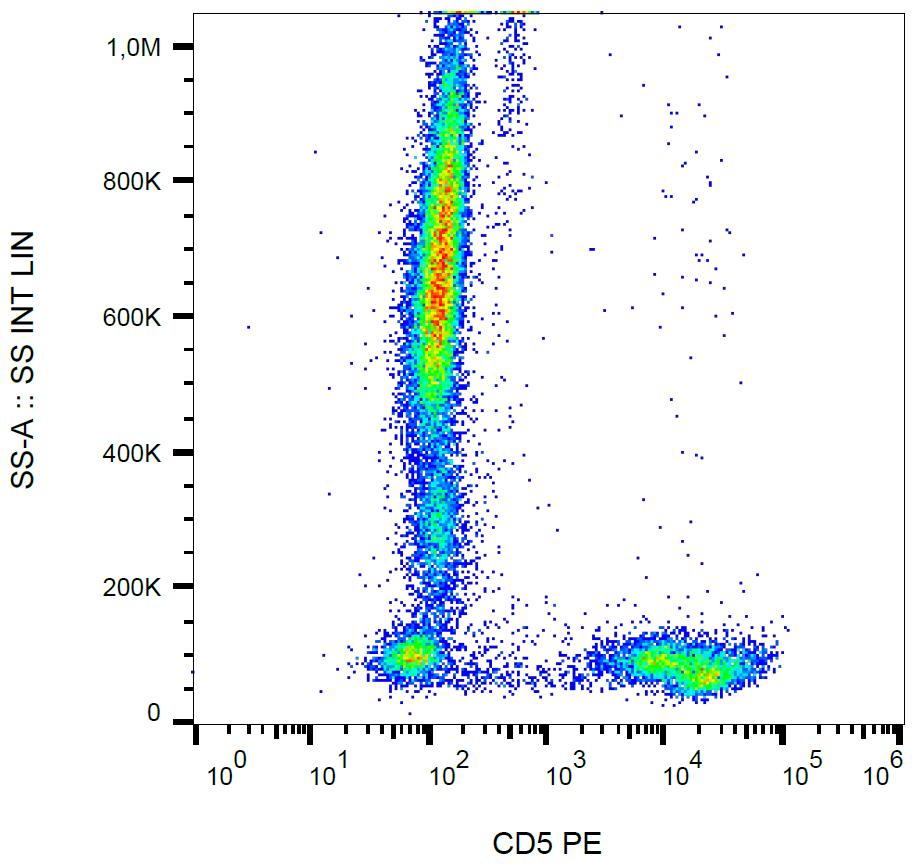CD5 Mouse Monoclonal Antibody [Clone ID: L17F12]
CAT#: AM26700RP-N
CD5 mouse monoclonal antibody, clone L17F12, PE
Conjugation: Unconjugated APC Biotin FITC
Specifications
| Product Data | |
| Clone Name | L17F12 |
| Applications | FC |
| Recommended Dilution | Flow Cytometry analysis of human blood cells using 10 μl reagent / 100 μl of whole blood or 106 cells in a suspension. The content of a vial (1 ml) is sufficient for 100 tests. |
| Reactivities | Human |
| Host | Mouse |
| Isotype | IgG2a |
| Clonality | Monoclonal |
| Immunogen | Human acute lymphoblastic leukemia (ALL) T cells |
| Specificity | This antibody reacts with CD5, a 67kDa single-chain transmembrane glycoprotein expressed on mature T lymphocytes, most of thymocytes and B lymphocytes subset (B-1a lymphocytes). |
| Formulation | Phosphate buffered saline (PBS) Label: PE State: Liquid Ig fraction Preservative: 15 mM sodium azide |
| Purification | Size-exclusion chromatography |
| Conjugation | PE |
| Storage | Store undiluted at 2-8°C. DO NOT FREEZE! This products is photosensitive and should be protected from light. |
| Stability | Shelf life: one year from despatch. |
| Gene Name | CD5 molecule |
| Database Link | |
| Background | CD5 antigen (T1; 67 kDa) is a human cell surface T-lymphocyte single-chain transmembrane glycoprotein. CD5 is expressed on all mature T-lymphocytes, most of thymocytes, subset of B-lymphocytes and on many T-cell leukemias and lymphomas. It is a type I membrane glycoprotein whose extracellular region contains three scavenger receptor cysteine-rich (SRCR) domains. |
| Synonyms | CD5, LEU1 |
| Reference Data | |
Documents
| Product Manuals |
| FAQs |
| SDS |
{0} Product Review(s)
Be the first one to submit a review






























































































































































































































































 Germany
Germany
 Japan
Japan
 United Kingdom
United Kingdom
 China
China



